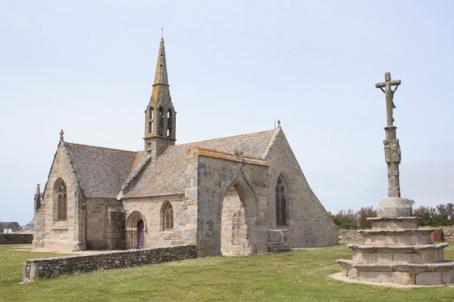Chapel of Langidou

The chapel would have been built in the 13th century then restored at the end of the 14th / beginning of the 15th century. Destroyed during the revolution, its stones were used for the construction of a guard house on the coast. Today in ruins, it still retains its charm and especially this splendid rose at the bedside, like a stone lace, which dates from the early fifteenth century. The chapel is one of the best representatives of the architectural style of Pont-Croix.
About this building
The chapel is approximately 22 meters long and 13 meters wide. It had a nave, with two aisles with seven arches, ending in a straight wall at the chevet. What remains of the chapel today are: at the top, the east gable with a Gothic window, which is itself decorated with a beautiful rose window from the 15th century; at the bottom, the wide west façade without openings; two columns standing to the north of the nave; sections of wall where the sills and spandrels of some windows are visible. The nave of the chapel consisted of four bays, the choir only three, separated by triumphal arches at the entrance to the apse. The capital piers and the bases resting on benches are reminiscent of Kerinec and Pont-Croix. The archivolts are semicircular, decorated with mouldings and rest corbelled on tapered pendentives. The capitals and their carvings are carved from the same seat and finely worked. One notices the happy arrangement of the end piers which recall those of Meilars and Pluguffan.





